| |
 |
"Where Land and Ice Meet"
"Glaciers as Arctic Ecosystem Refugia"
KAJETAN DEJA1, 2, JAN MARCIN WĘSŁAWSKI1
1Institute of Oceanology Polish Academy of Science Department of Marine Ecology
Powstańców Warszawy 55, 81-712 Sopot,
2University of Silesia in Katowice, Faculty of Earth Sciences, Centre for Polar Studies
ul. Będzińska 60 41-200 Sosnowiec
e-mail: kaitoziom@gmail.com
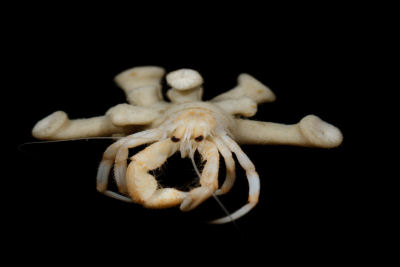
Hermit - Pagarus pubescens (Kroyer, 1838) - hermit crabs have to protect their fragile abdomen against predators. If they cannot find a suitable vacant shell for a shelter, they use fragments of coral skeletons or other sedentary organisms, or even trash jettisoned into the sea
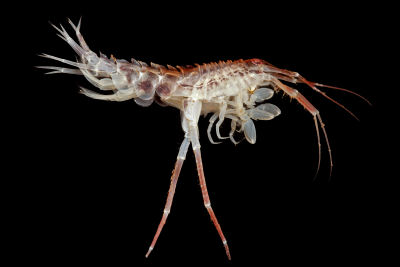
Maritime ballerina - Acanthostephia malmgreni (Goës, 1866) - up to 45 mm long, a typical arctic amphipod. It lives on muddy bottoms, where thanks to its pair of long legs, it does not sink in. It is an accomplished (side) swimmer and often leaves the bottom sediments to hunt small crustaceans in the depths
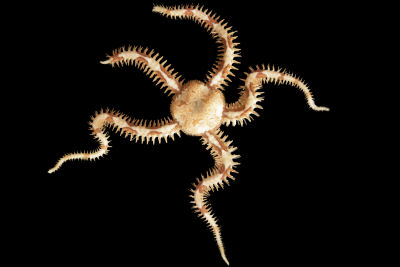
Sea snake - Ophiopholis aculeata (Linnaeus, 1767) - Brittle stars are often observed in the Arctic, they inhabit primarily hard bottom, where they take forms of various colours. They feed by filtering organic matter
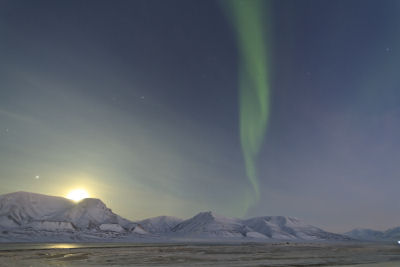
Polar meeting
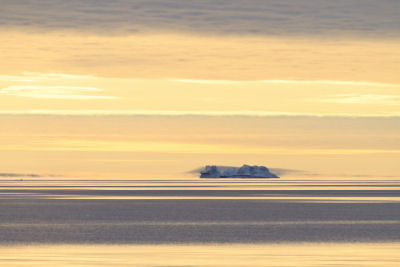
Lonely wanderer
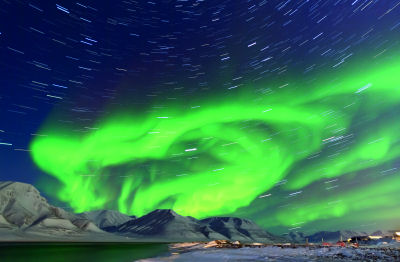
 Northern Lights Northern Lights
|

|
Description popularizing the research project
Ice wilderness surrounding the North Pole is inhabited by polar bears. The biggest of bears march majestically across the ice and snow, perfectly camouflaged in the white, although there are no creatures that would pose a real threat to them. They hunt seals and young walruses from ice floes which drift along the Arctic coast. Yet polar bears are endangered species themselves now. One of the causes is global warming, which results in shrinking the area where the predators can live, hunt and bring up their offspring. As the glaciers recede, ecological niches disappear for all species, including the giant white bears.
There are species ready to start a race for the territory abandoned by others. The glacier receding with all its fauna and flora does not leave vacuum in its wake. Where the glacier rested on the land, there are exposed rocks washed by waves of Arctic seas. Ice cold waters cover the ground during high tide, and uncover when the waters withdraw with the low tide. A new ecosystem is gradually forming there, expected by tiny plants and minute animals which run their sedentary lives among the waves breaking on the shore. Sea birds will pay a visit to the bared rocks to feed, rest or have offspring. Other animals will follow them to do the same.
Maybe they will stay longer.
Such scenarios are already taking place. At a rate comparable with the length of human life the glaciers in nearly all high mountains in the world are disappearing. Similar processes have also started in the Arctic regions. Researchers have observed glaciers melting for a long time. It is impossible to stop the process now. And it is hard to believe we will be also able to save habitats of polar bears when ice floes will melt and disappear in the ocean. The only thing left is to document and describe changes where ice and land meet. And there is hope that polar bears will find the new Arctic beaches pleasant.
Abstract
GLAERE - Glaciers as Arctic Ecosystem Refugia Participants:
- Instytut Oceanologii PAN: nstitute of Oceanology PAN: AGNIESZKA BESZCZYŃSKA-MÖLLER, JOANNA LEGEŻYŃSKA, MARTA GŁUCHOWSKA, SŁAWOMIR SAGAN, JOANNA SZCZUCKA, JAN MARCIN WĘSŁAWSKI, MARIA WŁO-DARSKA KOWALCZUK
- Norsk Polarinstitutt: SEBASTIEN DESCAMPS, JACK KOHLER, KIT KOVACS, CHRISTIAN LYDERSEN, HARALD STEEN, HALVARD STROM
- Department of Vertebrates Ecology University of Gdańsk: LECH STEMPNIEWICZ, DARIUSZ JAKUBAS
- Geographic Information Center University of Gdańsk: JACEK URBAŃSKI, AGNIESZKA WOCHNA
- National Marine Fisheries Research Institute: DARIUSZ FEY
- University Studies on Svalbard: JORGEN BERGE
- University of Tromso: ROLF A. IMS.
This project will assess the importance of glacial bays as foraging areas for selected top predators and as habitats for cold water fauna in a quantitative manner. This assessment will be based on a combination of archival data and new data collected during this program. In this assessment, future scenarios in relation to the predicted fate of these glacial hotspots in Sval-bard, together with possible compensatory effects via the influences of river mouths and mud-flats in areas where glaciers retreat onto land, .will be addressed.
Project funded by Norwegian Funding Mechanism in 2013 nr DZP/POL-NOR/1876/2013 6th August 2013 RIS 6783
|
|
Komitet Organizacyjny

Współpraca

Sponsorzy








Patronat medialny


|
 2006
2006
 2008
2008
 2010
2010
 2012
2012
 2014
2014












 Northern Lights
Northern Lights









